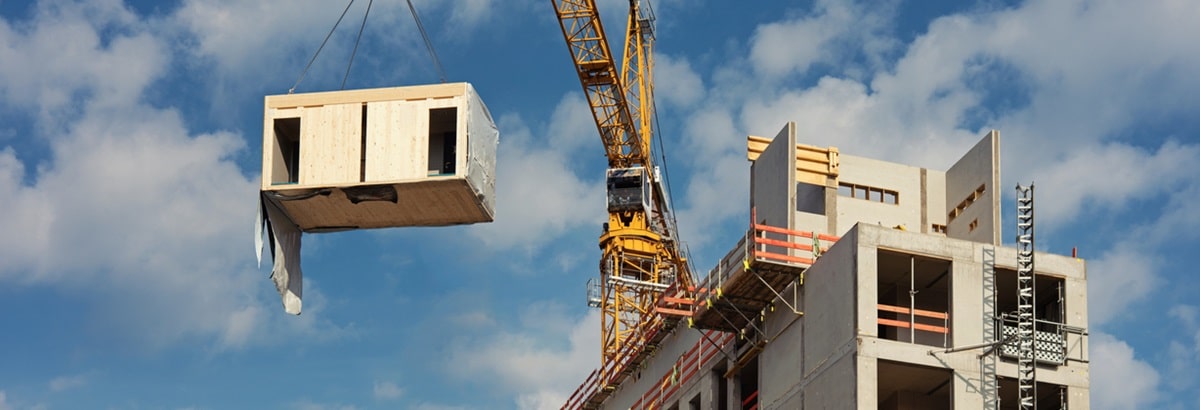Cristina Leon Vera | 27/11/2024
Industrial or prefabricated construction is revolutionizing the construction sector by offering quick, sustainable, and efficient solutions. We address the advantages it offers and its positive impact on the environment and on new urban models.
Modular construction has emerged as a powerful alternative to traditional building methods. Javier Rabadán Sánchez-Lafuente, Sales Director of Sismo, a leading industrialized construction company in Europe, outlines the main advantages of this system and its relevance in the contemporary context.
Complementary and affordable
This technique, also known as off-site production, involves the manufacture of certain components of a building in an industrial environment, which are subsequently transported for assembly with other elements of the final building. Some of the most significant advantages of this industry compared to conventional construction are the reduction in execution times and decreased need for labor, which directly impacts the investment required by the developer. “In addition, it is possible to guarantee construction costs; that is, to set an initial budget, unlike the traditional system, which often faces unforeseen delays and irregular scheduling,” says Rabadán.
It is important to note that modular techniques do not completely replace traditional methods, but rather complement them. As the expert asserts, “although a large part of the structure is produced in a factory, many phases of the process still require conventional methodologies, such as carpentry elements or flooring.”
This combination allows for the best of both worlds: the efficiency of modular construction and the adaptability of traditional methods. Although it can be applied to any type of construction, it is especially beneficial for large infrastructures, which would require less labor and would take place in a much safer and more reliable environment.
Critical selection of materials
There is no single formula for creating modular pieces; however, two of the most commonly used materials are galvanized steel and expanded polystyrene, recognized for their excellent thermal insulation properties at an affordable cost and their workability.
Concrete, a classic material, also plays a fundamental role in this context. “It is well known, not only in Spain but worldwide, and it allows for achieving high levels of structural and acoustic resistance,” adds Rabadán. The key to the success of these pieces lies in the assembly of all components, which requires specific machinery to ensure that they work together effectively.
Unprecedented design process
One of the most distinctive characteristics of modular construction is that it requires a more detailed approach in the early design phases, with a “thorough study of all elements.” Sismo explains that “many components are manufactured before arriving at the construction site, so it is essential to conduct a thorough study of each of them not only to improve the quality of the end product, but also to ensure that it will be done effectively.” A well-planned design ensures that all elements fit perfectly, minimizing rework at the construction site.
The choice of these innovative materials, the techniques that mitigate the environmental impact of their production, and the promotion of the durability of buildings give modular construction an initial advantage: its compliance with the demanding regulations arising from the global commitment to sustainability, which is often difficult for traditional companies to assimilate. “When manufacturing in a controlled environment, material waste is significantly reduced, recycling is facilitated, and design techniques that enhance the energy efficiency of constructions can be incorporated,” asserts Javier Rabadán.
Challenges and obstacles to its development
Modular construction represents an innovative solution that addresses many of the inefficiencies of traditional construction, but also brings new challenges that the sector is facing with remarkable success. One of the most relevant challenges is related to mobility. “Transportation linked to this activity is very high, although work is usually done in an accessible environment. We operate in Spain, Portugal, Morocco, the Canary Islands, and the Balearic Islands, where there is a large logistical network despite the distances,” acknowledges Rabadán. Although this imperative process has the disadvantage of fuel usage, strategies are being developed to reduce energy consumption, such as optimizing transportation, calibrating weights and volumes, and improving load performance.
It is also essential to promote the specialization of professionals in the sector and to overcome the barriers imposed by the traditional culture of the industry. As the demand for sustainable and affordable buildings continues to rise, some companies are reluctant to adopt viable and promising alternatives. “There are certain areas of construction that still have a brick mentality, but they will end up seeing the advantages of modular construction,” he concludes.
Featuring the participation in this article of…

Francisco Javier Rabadán Sánchez-Lafuente has over 20 years of work experience focused on the construction of buildings. He is a Civil Engineer with a specialization in the calculation of structures and buildings, and has worked as a site manager for building projects and structural calculations. After completing an MBA in Business Administration and Management, he joined Sismo Spain in 2012.





